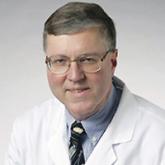Conference Coverage

How Do You Treat a Patient With Refractory Headache?
RIVIERA BEACH, FL—Neurologists sometimes encounter patients with headaches that have not responded to prior treatment. These patients may be...

STOWE, VT—Medication overuse headache is frequent, treatable, and preventable, according to an overview provided at the Headache Cooperative of New England’s 27th Annual Stowe Headache Symposium.
The first step in treating medication overuse headache is to teach patients about the condition and how they can reduce their intake of acute medication. If patients still overuse medication, neurologists can prescribe a preventive therapy, such as topiramate or botulinum toxin. If preventive therapies fail, patients may require detoxification and integrated headache management, said Hans-Christoph Diener, MD, PhD, Senior Professor of Clinical Neurosciences and Director of the Headache Center at University Hospital Essen in Germany.
The diagnostic criteria for medication overuse headache include headache on 15 or more days per month, a pre-existing headache disorder, and regular overuse for more than three months of one or more acute or symptomatic headache drugs. The worldwide prevalence of medication overuse headache is about 1%, and about 10% of patients in headache centers have medication overuse headache.
A meta-analysis of 29 studies with more than 2,600 patients found that medication overuse headache is more common in women than in men (3.5:1). About 65% of patients have a history of migraine, 27% have a history of tension-type headache, and 8% have a history of cluster headache. At diagnosis, patients’ average age is 40, average duration of primary headache is about 20 years, average duration of drug overuse is about 10 years, and average duration of medication overuse headache is about six years. “It is a slowly developing process,” Dr. Diener said. “Unfortunately, the patients present much too late.”
Risk factors include frequent headache, depression, anxiety, obesity, and other chronic pain conditions (eg, low back pain and fibromyalgia). Low socioeconomic status, being an immigrant, living alone, caffeine overuse, and opioid use also are associated with increased risk of medication overuse headache.
In an effort to treat patients with frequent episodic headache before they develop chronic migraine and medication overuse, Dr. Diener’s headache center evaluates high-risk patients who are referred by insurance companies. “If somebody has enough of these risk factors and frequent prescription of triptans, someone from the insurance company will call the patient and say, ‘Do you have problems with your headache?’” If so, the insurance company refers the patient. “In this way, we now get patients on the way to developing medication overuse, and we can treat them before they have full-blown medication overuse headache,” Dr. Diener said.
Overuse of triptans, ergots, barbiturates, and opioids may cause medication overuse headache, and a combination drug is more likely to cause medication overuse headache, compared with a drug with a single active ingredient. Limmroth et al conducted a prospective study of 98 patients with medication overuse headache to assess headache features associated with overuse of various drugs. With triptan overuse, migraine frequency increased in a majority of patients, and some patients developed a tension-type-like headache. With ergot overuse, patients tended to develop a tension-type-like daily headache. With analgesic overuse, the phenotype changed to a daily headache that resembled tension-type headache.
When treating medication overuse headache, “simple advice is effective in a subgroup of patients,” Dr. Diener said. Grande et al taught 109 patients about medication overuse with the goal of reducing intake of acute medication. After 18 months, mean medication days per month significantly decreased from 22 at baseline to six. Education “worked in the majority of these patients,” Dr. Diener said.
Rossi et al conducted a prospective randomized trial in Italy that included 120 patients with medication overuse headache. The researchers randomized patients to advice, a structured outpatient program, or a one-week inpatient program. “There was basically no difference” between the three groups at four and eight weeks, Dr. Diener said. All three groups experienced a reduction in medication days per month of between 70% and 80%.
Neurologists had thought that medication overuse might render preventive medication ineffective, but studies have found that topiramate and onabotulinum toxinA are effective preventive agents in this population. The trials excluded patients who had overused barbiturates or opioids, however. In such cases, “it is not only overuse, it is addiction,” Dr. Diener said. “That is a totally different disease.”
Dr. Diener and colleagues conducted a randomized trial of topiramate in patients with chronic migraine. A majority of the patients overused triptans (ie, they took triptans on at least 10 days per four weeks). Patients had about 16 migraine days per month.
Compared with baseline, patients who received placebo had virtually no change in headache days per month, whereas patients who received topiramate had about five fewer headache days per month at 16 weeks. Two-thirds of patients in the active treatment group no longer overused medication at the end of the study. A parallel study in the United States had similar results. “We should offer this [treatment] to patients prior to drug withdrawal,” Dr. Diener said. “If patients refuse or cannot tolerate the drug,” then neurologists may consider other options, including botulinum toxin.
OnabotulinumtoxinA was evaluated in two trials. About 65% of patients overused medication in the active treatment and placebo groups of each trial, and treatment significantly reduced headache days in patients who did and did not overuse medication. In addition, compared with patients who received placebo, a greater proportion of patients who received onabotulinumtoxinA no longer overused medication for three and six consecutive months. Patients can choose between topiramate tablets and onabotulinumtoxinA injections as preventive therapy, Dr. Diener said.
If preventive medication fails to help patients, the next step is detoxification. Dr. Diener has patients stop acute medications cold turkey and initiates preventive therapy at that time. Patients at Dr. Diener’s center normally undergo detoxification on an outpatient basis.
Chiang et al assessed the evidence for withdrawal, withdrawal with preventive medications, and preventive medications alone. Withdrawal and withdrawal with preventive medications were found to be possibly effective, while the use of preventive medications alone was found to be likely effective. Withdrawal alone has a high failure rate and worsens symptoms in some patients. Withdrawal with preventive medication produced encouraging results in some studies, but the studies lacked control groups.
Studies suggest that the relapse rate for medication overuse headache is about 10% per year, Dr. Diener said.
At Essen Headache Center, researchers prospectively studied 150 patients who had a diagnosis of migraine and medication overuse headache. A third achieved successful treatment with counseling and education. Another third benefited from topiramate or botulinum toxin. And the remaining third required detoxification. The majority of patients requiring detoxification had comorbidities (eg, chronic low back pain or depression). These patients require integrated headache care, including preventive therapy, exercise and physiotherapy, behavioral therapy (eg, stress management and relaxation), and education.
“The most important part is education,” Dr. Diener said. Headache center staff members tell patients that they will leave the center knowing more about their condition than their general practitioner does. “This is the goal that we want to achieve,” he said.
—Jake Remaly
Chiang CC, Schwedt TJ, Wang SJ, Dodick DW. Treatment of medication-overuse headache: A systematic review. Cephalalgia. 2016;36(4):371-386.
Diener HC, Dodick DW, Aurora SK, et al. OnabotulinumtoxinA for treatment of chronic migraine: results from the double-blind, randomized, placebo-controlled phase of the PREEMPT 2 trial. Cephalalgia. 2010;30(7):804-814.
Diener HC, Dodick DW, Goadsby PJ, et al. Utility of topiramate for the treatment of patients with chronic migraine in the presence or absence of acute medication overuse. Cephalalgia. 2009;29(10):1021-1027.
Diener HC, Holle D, Solbach K, Gaul C. Medication-overuse headache: risk factors, pathophysiology and management. Nat Rev Neurol. 2016;12(10):575-583.
Grande RB, Aaseth K, Benth JŠ, et al. Reduction in medication-overuse headache after short information. The Akershus study of chronic headache. Eur J Neurol. 2011;18(1):129-137.
Limmroth V, Katsarava Z, Fritsche G, et al. Features of medication overuse headache following overuse of different acute headache drugs. Neurology. 2002;59(7):1011-1014.
Pijpers JA, Louter MA, de Bruin ME, et al. Detoxification in medication-overuse headache, a retrospective controlled follow-up study: Does care by a headache nurse lead to cure? Cephalalgia. 2016;36(2):122-130.
Rossi P, Di Lorenzo C, Faroni J, et al. Advice alone vs. structured detoxification programmes for medication overuse headache: a prospective, randomized, open-label trial in transformed migraine patients with low medical needs. Cephalalgia. 2006;26(9):1097-1105.

RIVIERA BEACH, FL—Neurologists sometimes encounter patients with headaches that have not responded to prior treatment. These patients may be...

